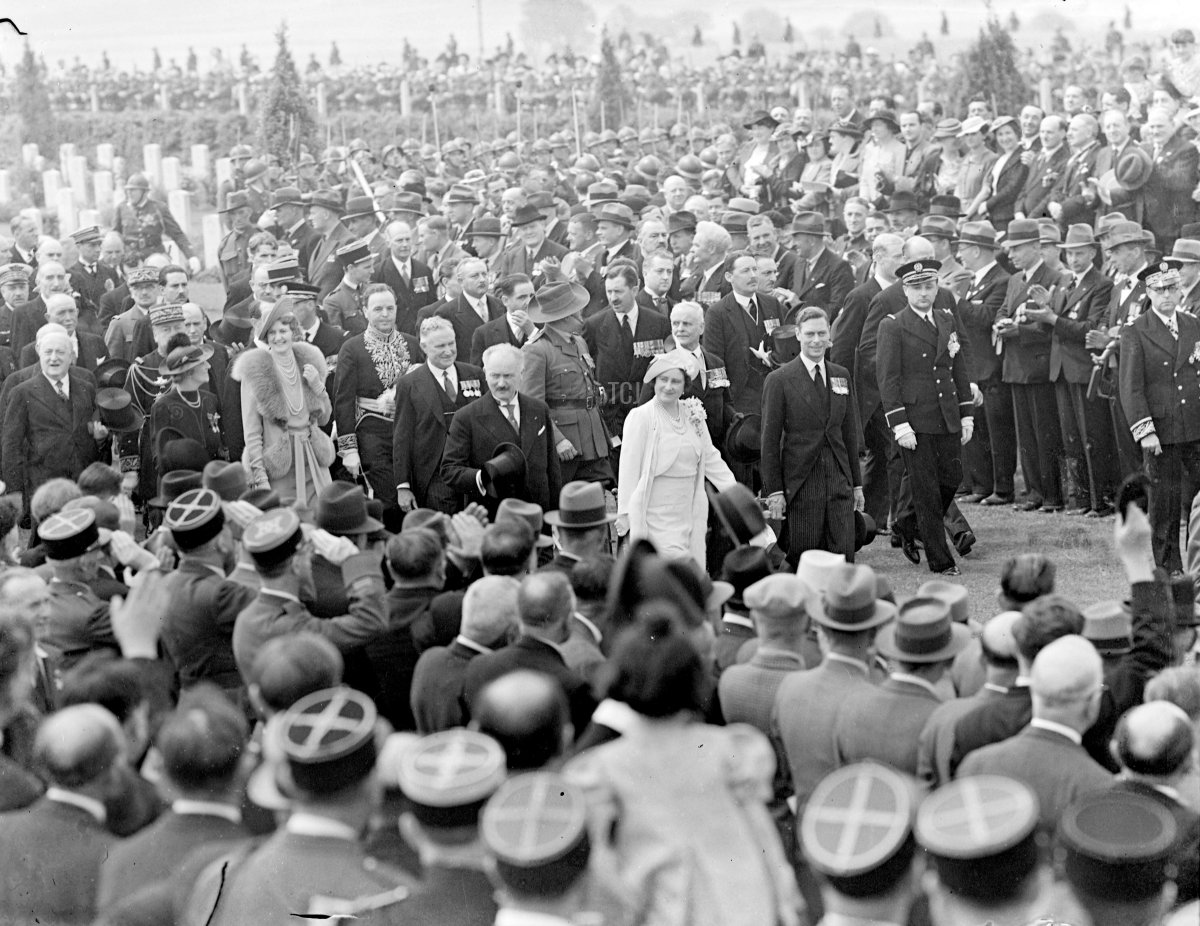
Today, our Sparkling Spotlight shines on one of the most iconic royal pearl moments of all: Queen Elizabeth the Queen Mother’s famous White Wardrobe jewels from her visit to France in the summer of 1938.
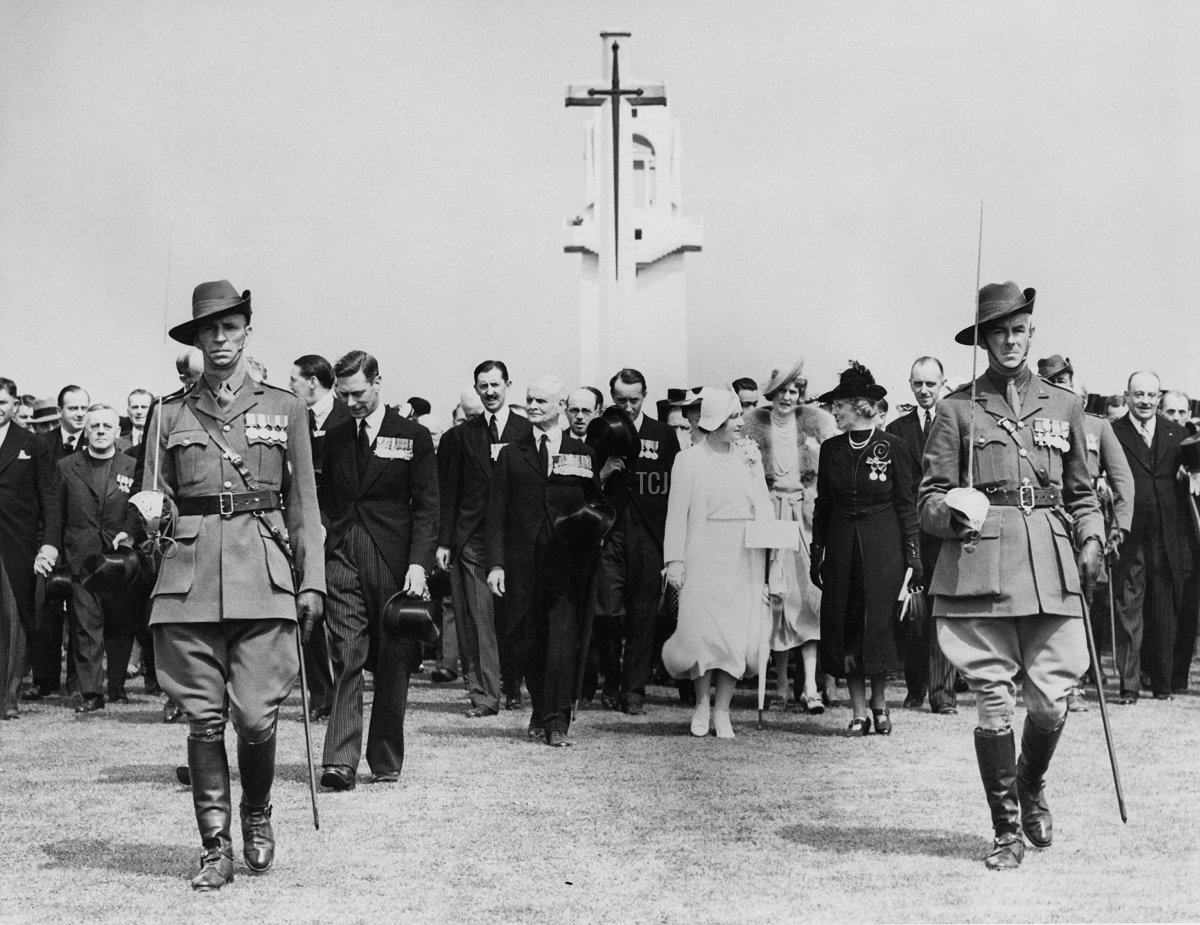
In the spring of 1938, Buckingham Palace was hard at work planning King George VI and Queen Elizabeth’s first state visit. They were due to arrive in France for the visit in June, but the death of the Queen’s mother, the Countess of Strathmore, meant that plans had to be changed. So did the Queen’s state visit wardrobe, which was in the process of being made by Norman Hartnell.
Instead of remaking the tour wardrobe in black mourning colors, Hartnell suggested that the Queen’s clothes for the visit should be white instead, pointing to Queen Victoria’s all-white funeral as a royal precedent. The fittings for the outfits were finished in a hurried rush; Elizabeth wrote to her mother-in-law, Queen Mary, that she was “nearly demented with rushing up and down and trying to order and try on all my white things for Paris!” With the white wardrobe, naturally, the Queen packed lots of royal pearls in her bags, too.
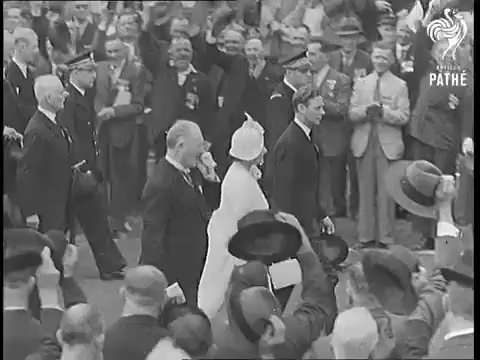
Three weeks after the state visit had originally been scheduled, King George VI and Queen Elizabeth arrived in Paris, where they were greeted by President Lebrun. The visit was packed with events like dinners, opera visits, and galas (which you can read all about in our earlier post on the state visit). Today’s post, though, is focused solely on the final event of the visit: the royal couple’s journey to Villers-Bretonneux on July 22, 1938, for the unveiling of the new Australian National Memorial. The memorial was dedicated to the memory of more than 10,000 Australian soldiers who were killed in the First World War.
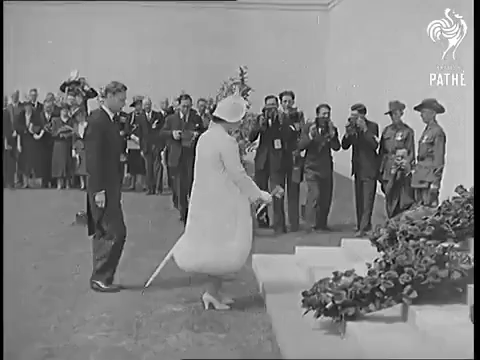
The Queen, whose white coat, dress, and hat stood in stark contrast to the dark suits and dresses of the others gathered for the unveiling, joined the King in making floral tributes to the Australian soldiers who had been lost in the conflict. Her biographer, William Shawcross, explains: “After the King had laid his official wreath, the Queen spontaneously approached the memorial and laid on it a bunch of red poppies from the surrounding fields which had been given to her that morning by a schoolboy.”
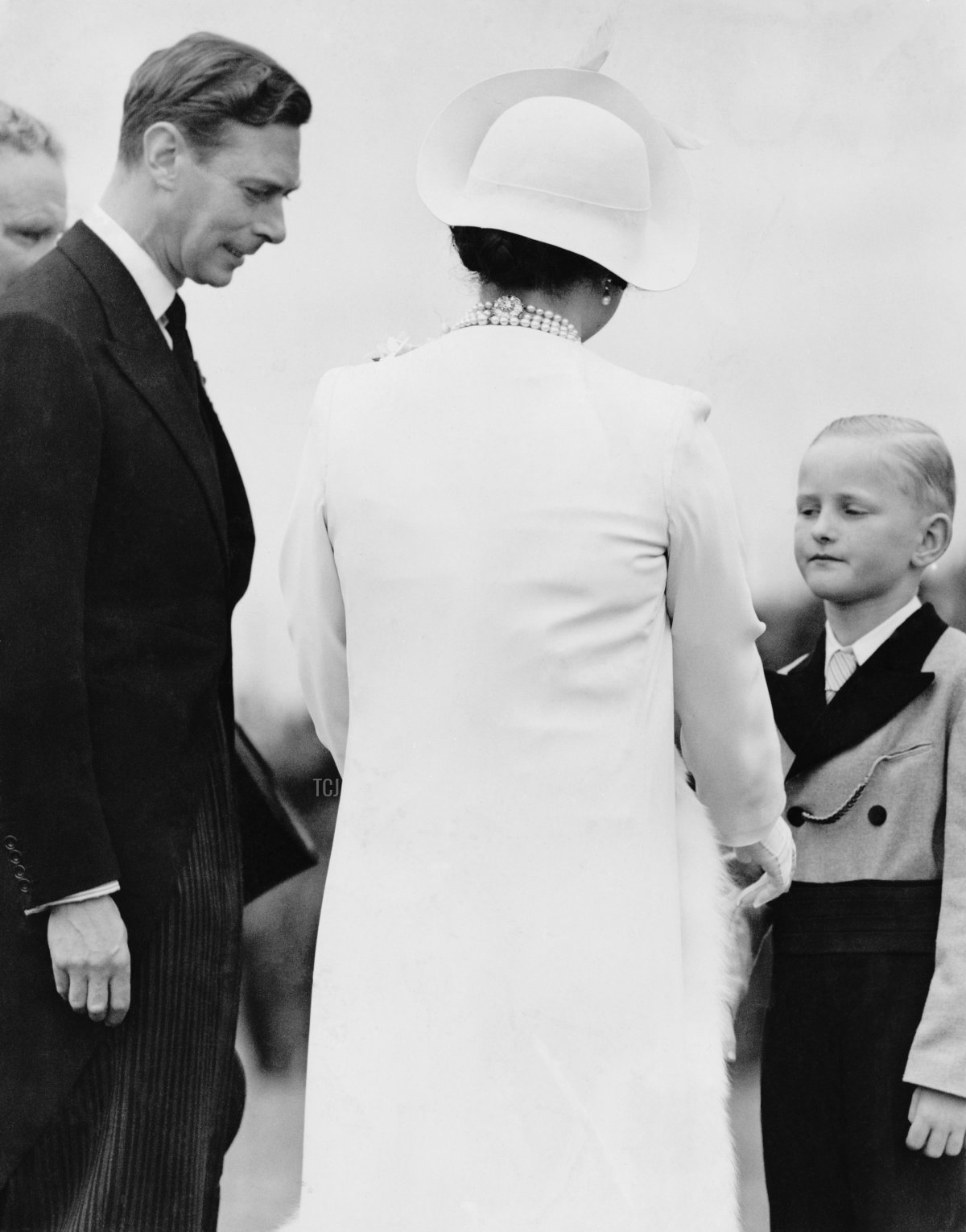
The moment when the Queen received the poppies from the young boy appears to have been captured in this photograph from the day.
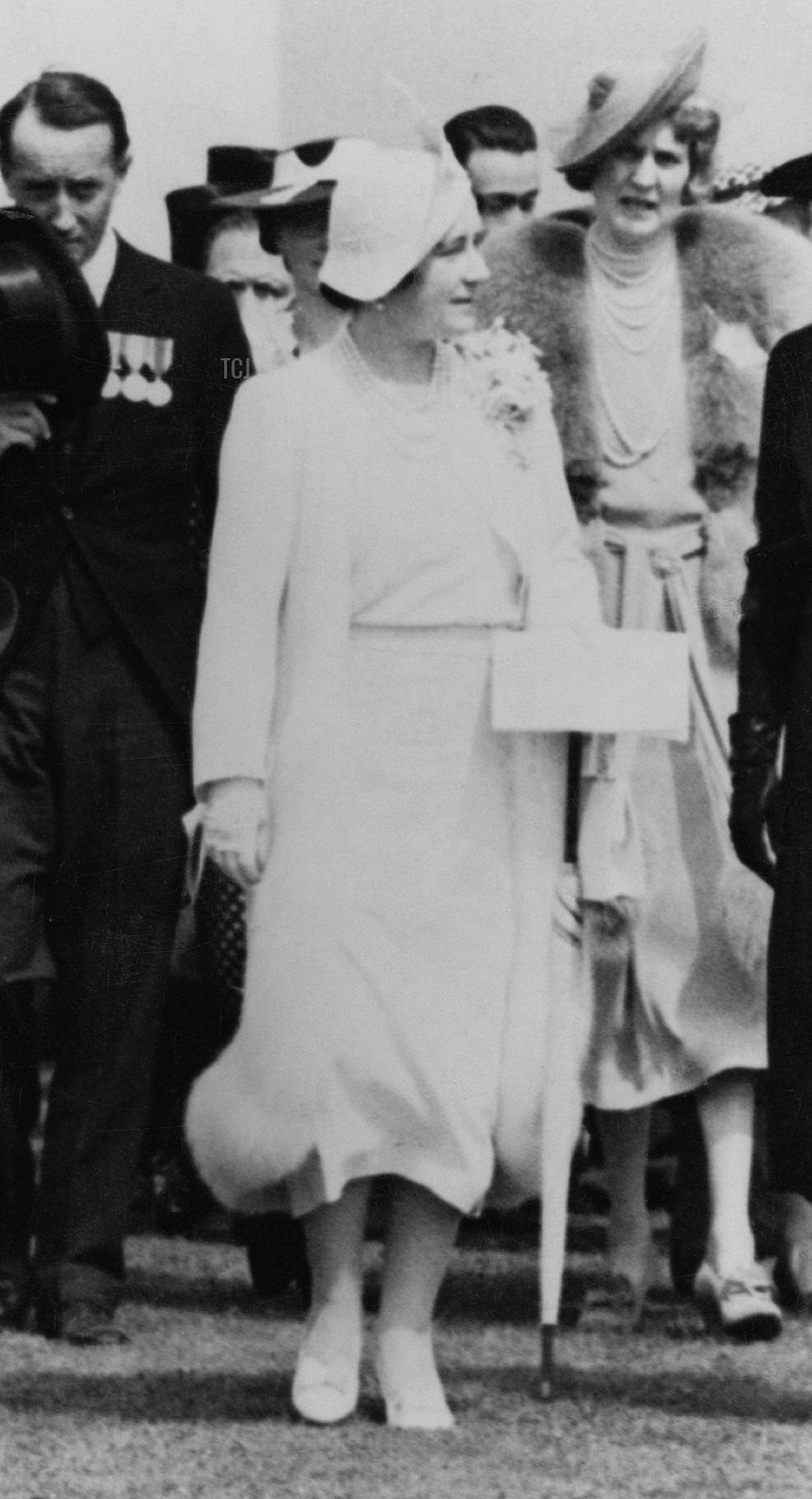
The Queen’s white wardrobe was a triumph, as was the entire visit. The clothing choices had been well judged by Hartnell, offering the public a way to remember that the Queen had recently suffered a loss, while still allowing her to easily be seen during the events of the visit. The royal pearls and diamonds that the Queen wore with the white outfits added even more elegance to the overall effect.
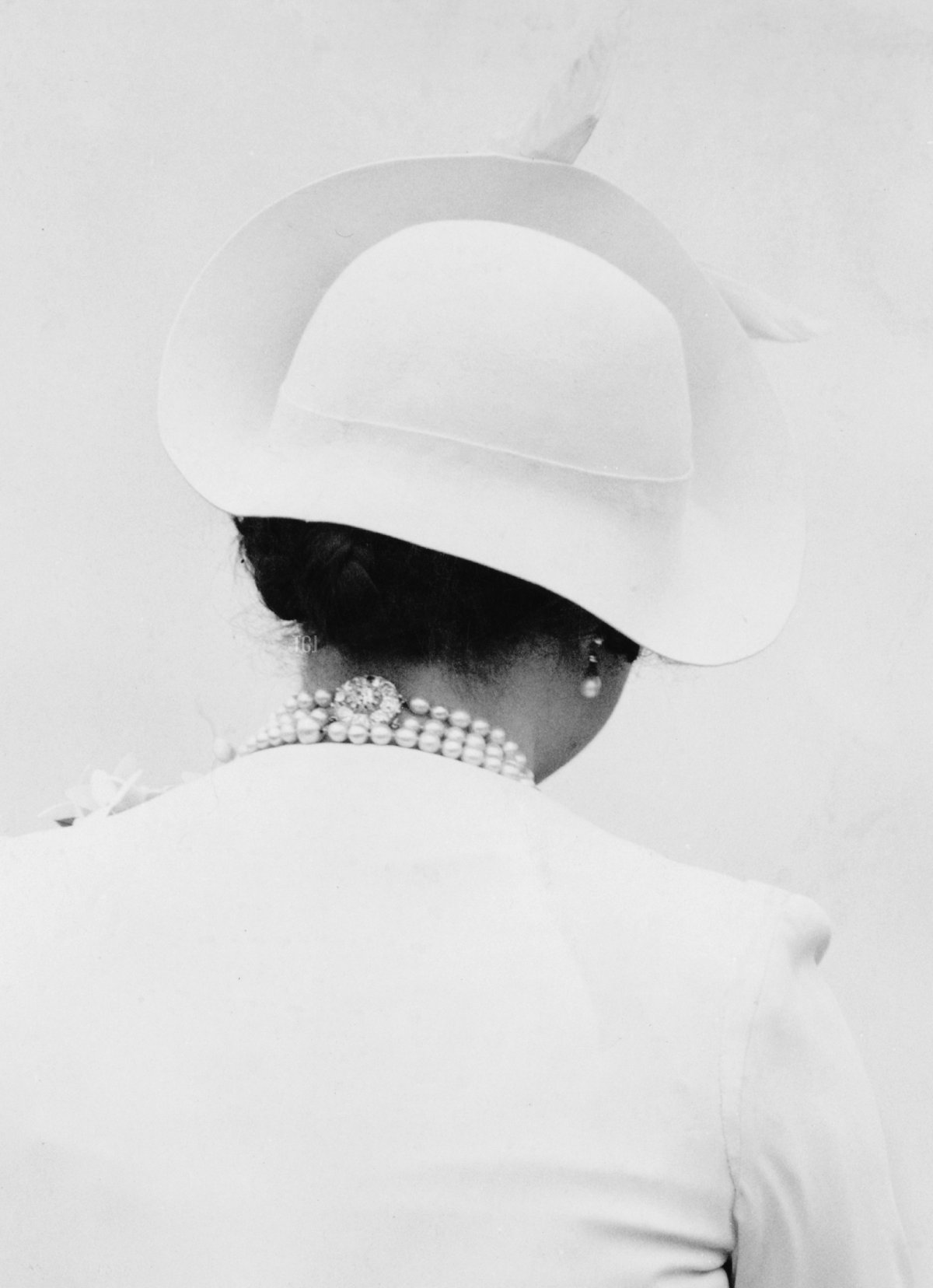
For the visit to Villers–Bretonneux, the Queen wore a pair of dainty pearl drop earrings that she favored during the early years of her marriage. She also wore three strands of pearls. Above, you can see that the pearls are really two separate necklaces. A diamond button clasp joins together the top two strands, while the third strand is a separate necklace. The diamond clasp tells us that the top two strands are the Hanoverian Pearls. As the name of the necklace suggests, the pearls were allegedly brought to Britain by King George I, the first British monarch from the House of Hanover. Some of the pearls are also said to have belonged to Mary, Queen of Scots. (George was a direct descendant of Mary via her granddaughter, Elizabeth Stuart.)
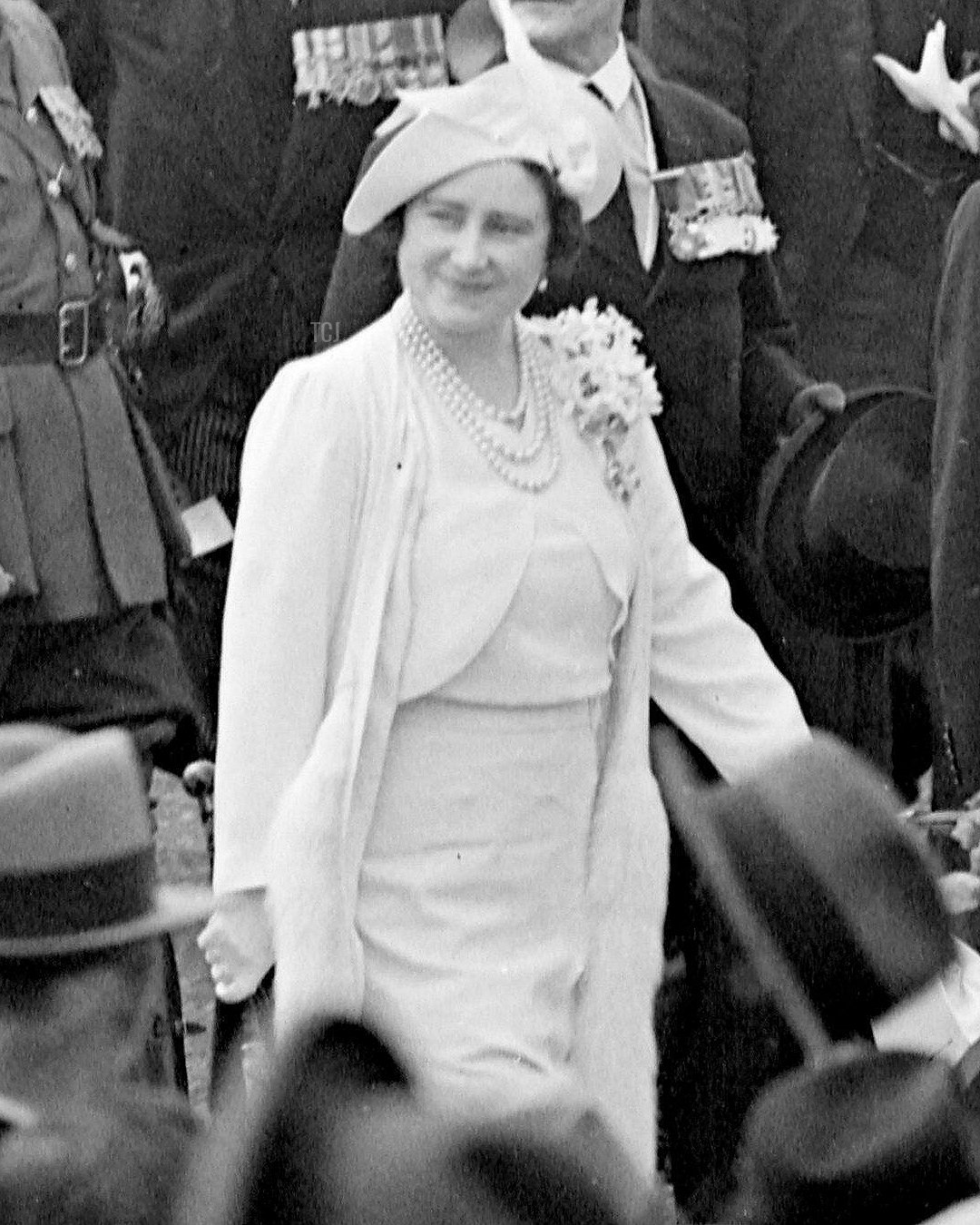
Elizabeth also added one more piece of heirloom jewelry to her ensemble: one of Queen Victoria’s Diamond Bow Brooches, which she placed below her floral corsage. The King and Queen departed for Britain directly after the memorial unveiling, and the Queen wore the same outfit and jewels for their official farewell. The response from the French, recorded by several of their contemporaries, was overwhelmingly positive. Neville Chamberlain wrote that “the Queen’s smile as usual took every place by storm.” Duff Cooper wrote in his diary that the enthusiasm from the French was “good, but I view the near future with great disquiet and if we are at peace when Parliament meets on November 1st I think we shall be fortunate.” That State Opening of Parliament was indeed held in peacetime, but less than a year later, the Second World War had begun.
Leave a Reply
You must be logged in to post a comment.